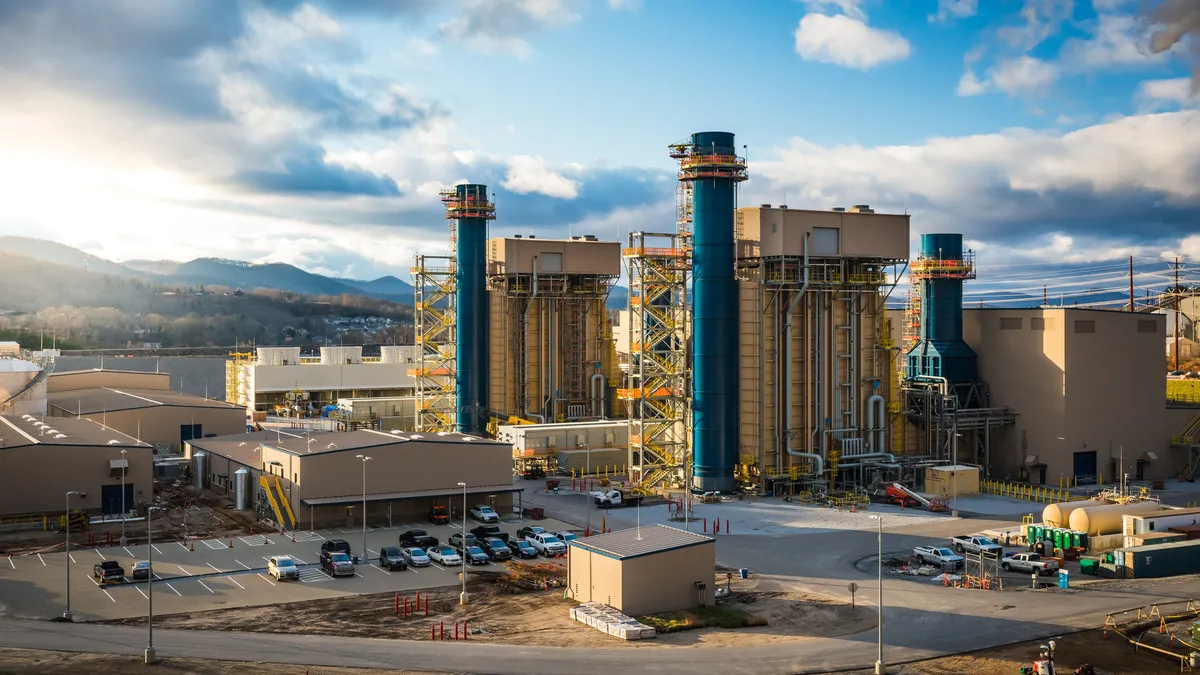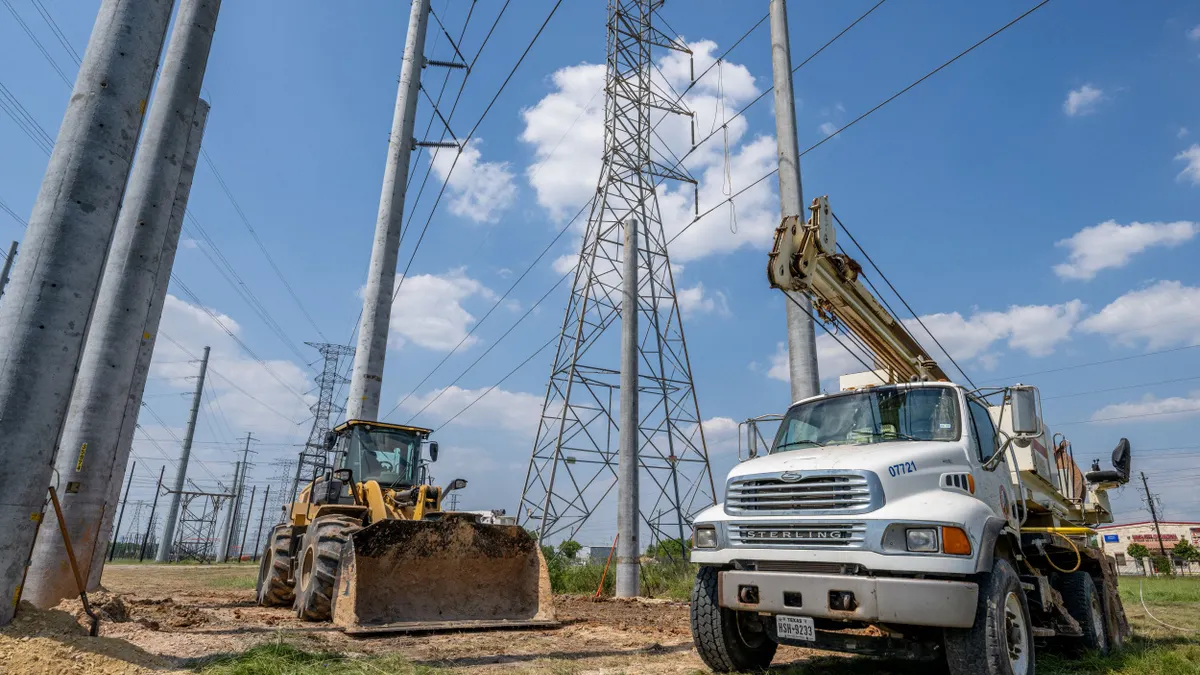The following is a contributed article by Tony Clark, a former Federal Energy Regulatory Commission commissioner and a former commissioner and chairman of the North Dakota Public Service Commission who is now a senior advisor at the firm of Wilkinson Barker Knauer.
By any standard, the clean energy spending provisions of the Inflation Reduction Act are massive. On this point, Democrats and Republicans seem to agree. Hundreds of billions in favored federal tax treatment and subsidies for renewable and other low-carbon emitting electric generation technologies is more than a thumb on the scale of energy markets, it is a twelve-ton dump truck.
The spillover implications on electricity regulation and policy will be profound. Many of those impacts will be handled by the nation’s energy regulators. Here are four ramifications of the recent Congressional action that will influence the work of regulators at FERC and in the states:
1. RTO reform is now an imperative. The integrity of the price system in the nation’s regional transmission organizations has been on shaky ground for several years, but the IRA will unleash forces that make it unlikely that RTOs, as they exist today, will be able to execute on their mission.
Recall that RTOs are built on the foundational concept that prices — expressed as locational marginal price — will accomplish tasks related to dispatch and reliability. Accurate price signals are central to their functioning. Yet the IRA will almost certainly incent a large scale buildout of resources that are price agnostic and whose output is variable. That’s not a criticism, that’s a fact.
Wind and solar resources have essentially no marginal costs and will run at nearly any price, including negative prices, so long as the weather cooperates. Relatedly, the viability of the uniform clearing price auction is in jeopardy. It may no longer be a workable paradigm to pay all generation resources the highest marginal cost of energy since many have no marginal costs and do not share similar operating characteristics with those that do.
As MIT Professor Michael Mehling recently said, “For 20 or 30 years, we thought we knew what the optimal [market] design would be. But with changing circumstances … I think we also have to be sober enough to realize that at some point, this dearly held principle of what the optimal approach would be may have to be revisited.”
All the pressures that have so vexed market designers are now on steroids. Get ready for more involuntary curtailments of renewables, and regulatory workarounds to keep the lights on, like generator reliability-must-run contracts. These are a nod to practicality — but they are also an acknowledgment that the markets are not accomplishing what they are designed to do, namely, ensuring reliability without constant interventions.
2. The transmission interconnection queue problem just got a lot bigger. To take one example, the Midcontinent Independent System Operator reported that interconnection applications in the region now represent 171 GW of capacity, almost all of it renewable energy resources. And this is even before the IRA subsidies fully kick in. To put this in perspective, the entire current installed market capacity in MISO is 189 GW, and the historic peak summer load is 127 GW.
The IRA will have the effect of pouring jet fuel on that raging queue fire. The IRA increases exponentially the dollars chasing renewable energy projects, but lacking interconnection, they will have nowhere to go. It would be like taking all the rush hour traffic from an eight-lane superhighway and connecting it to a two-lane city street. Alas, while FERC has proposed several interconnection queue reform measures, there are few quick and easy solutions to this problem. Lacking economic signals to discipline generator entry, RTOs will be challenged to handle the conundrum.
The interconnection queue backlog, along with its cousin, the cost allocation morass, are Gordian Knots. Unfortunately, the RTOs may not have the institutional muscle to unwind them. Their bureaucratic stakeholder processes, and vague ownership and accountability structures may render the RTOs particularly feeble instruments to cut this knot. To the degree commenters have suggested a solution, it is mainly a call for a lot more electric transmission to be built. Whether that is feasible leads to the next point.
3. Transmission planning and permitting will take center stage. The renewables spurred by the IRA require a considerable transmission buildout. Accomplishing it will be no mean feat. The most oft-proposed solution is to federalize ever more of the transmission planning and permitting process. That may sound better in theory than in practice. Though the appeal is perhaps understandable, it raises uncomfortable questions about the proper role of the federal government in transmission policy.
Cost to end-use consumers is one of the biggest questions, but it is also an area where the federal government has little expertise. Remember, it is state and local governments that oversee the rates paid by retail customers.
A transmission build-out done with little regard for the integrated resource planning that takes place at the state level raises the specter of transmission being built not to serve customers most affordably – but to serve the desires of wholesale electricity generation developers whose interests may not align with customers’ or state public policy goals.
Furthermore, the federal government has a dismal record in streamlining infrastructure permitting, even when it is needed. Look no further than the Western U.S., where federal lands are often an obstacle to transmission, rather than a facilitator of it.
Infrastructure opponents have had increasing success obstructing projects with a federal nexus. FERC’s natural gas pipeline certification program is a good reference point. Activists have blocked needed energy projects through the aggressive use of litigation at every step of the permitting and review process. Without meaningful reform to federal laws like the National Environmental Policy Act and the Clean Water Act, all those litigation weapons will now be in the hands of interveners seeking to stop electric transmission lines.
4. On-demand generation will be more important than ever. It is perhaps counterintuitive, since the IRA will result in more renewables, but an increase in generation capacity from weather-dependent resources, means an increase in the need for on-demand generation capacity. MISO again offers a useful case study. As the RTO highlighted in April, accredited generation capacity has been dropping, even as installed capacity increases. On-demand resources may not run as often in a renewables-heavy future, but the value of their ability to run when called upon will be critical.
The most likely candidate to “firm-up” new renewables continues to be new natural gas generation, along with the preservation of other existing high-capacity factor resources. Batteries and demand response alone, though useful in certain situations, are presently not practical **at a scale up the task**. This means regulators will need to embrace the reliability attributes of renewables-supporting on-demand generation. For its part, FERC will need to streamline and stabilize its natural gas permitting program while encouraging even further gas-electric industry reliability coordination.
Although impacted by climate-related legislation like the IRA, utility regulatory commissions are primarily — by statute, history and practice — economic and reliability regulators. I suspect the next few years will reinforce that fact, because all these ramifications ultimately relate to the first principles that should drive the mission of every energy regulatory commission: the reliable supply of reasonably priced energy to Americans.






















